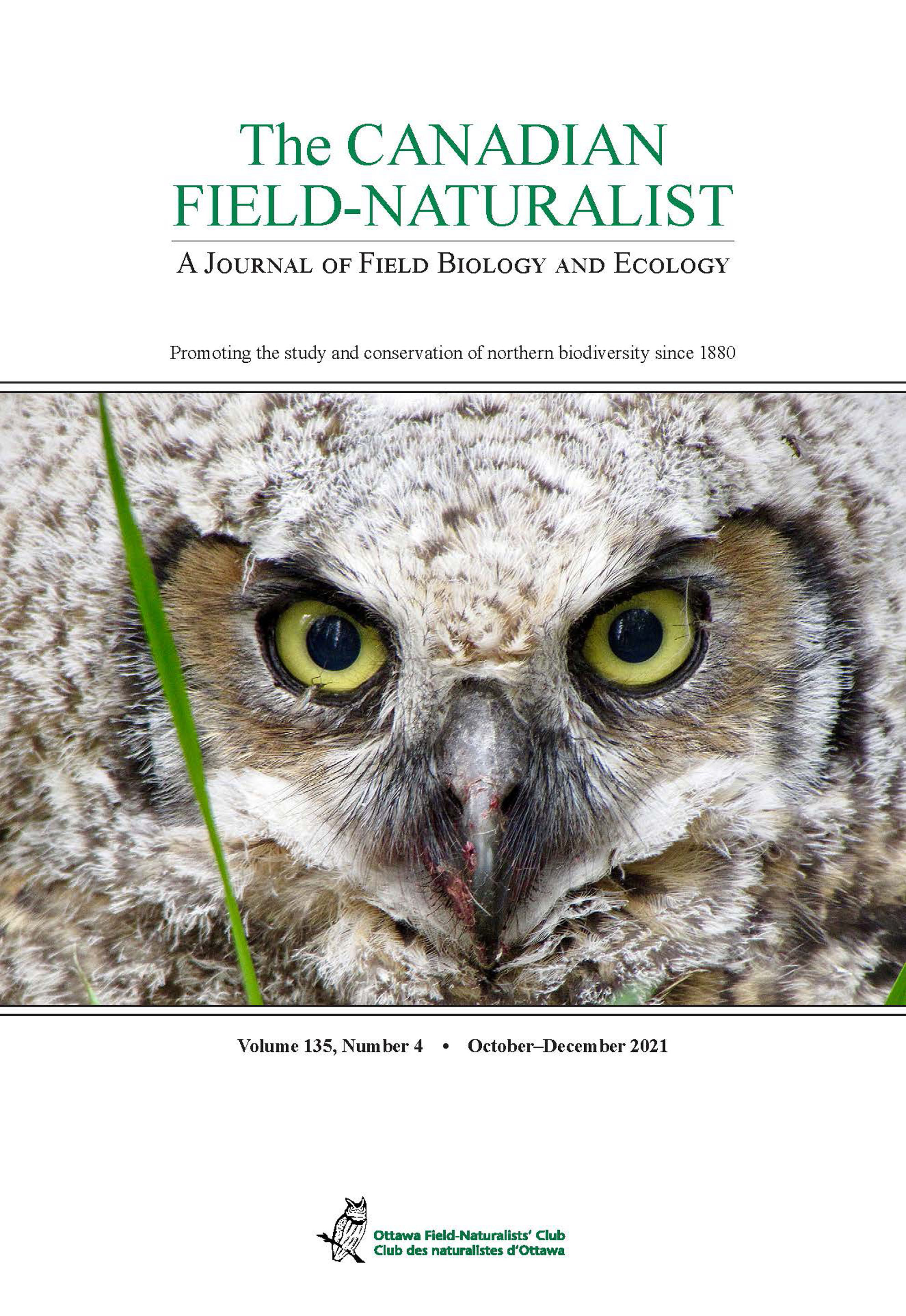Paedomorphic Blotched Tiger Salamander (Ambystoma mavortium melanostictum) in ovo counts, British Columbia, Canada
DOI:
https://doi.org/10.22621/cfn.v135i4.2116Keywords:
Blotched Tiger Salamander, Ambystoma mavortium melanostictum, egg mass, reproduction, life history, neotene, neoteny, paedogenal metamorphosisAbstract
Reproductively mature larval morphs, known as paedogens, are a rare occurrence in Blotched Tiger Salamander (Ambystoma mavortium melanostictum). The Southern Mountain population of this subspecies, confined to the southern interior of British Columbia, is listed federally as Endangered and has been facing increasing pressures from anthropogenic stressors in both their aquatic and terrestrial landscapes. In 2017, we examined a subset of 36 frozen Blotched Tiger Salamander paedogens collected in September 1985 after rotenone treatment in preparation for a recreational fishery near Oliver, British Columbia. We estimated total in ovo numbers in nine gravid individuals to gain insight into paedogen reproductive condition. The number of eggs per individual averaged 227 ± 109 [SD]; range 28–421), with larger dark eggs accounting for 133 ± 69 and smaller pale eggs (possibly follicles or colour may be an artifact of storage) accounting for 94 ± 49. Salamanders were collected in September after the expected egg-laying period for the terrestrial form (early spring); thus, the reproductive stage of the eggs is unclear, but is assumed to be post-breeding and representative of developing eggs and follicles. Canadian data on in ovo counts within the body cavity have not been reported for Blotched Tiger Salamander paedogens and our study provides valuable information on the reproductive condition of paedogens. Although terrestrial forms have been observed, the presence of paedogens in the treated wetland has yet to be detected.
Downloads
Published
Issue
Section
License
Copyright for Canadian Field-Naturalist content is held by the Ottawa Field-Naturalists' Club, except for content published by employees of federal government departments, in which case the copyright is held by the Crown. In-copyright content available at the Biodiversity Heritage Library is available for re-use under a Creative Commons Attribution-NonCommercial-ShareAlike 4.0 (CC BY-NC-SA 4.0) licence. For usage of content at the BHL for purposes other than those allowed under this licence, contact us.
To request use of copyright material, please contact our editor, Dr. Dwayne Lepitzki: editor -at- canadianfieldnaturalist -dot- ca





